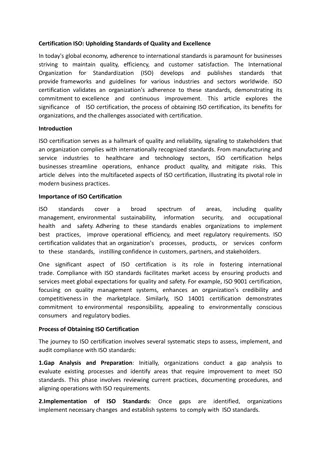
Exploring the Canadian Economy: Factors and Industries
Discover the Canadian economy through its history, trade agreements, natural resources, agriculture, manufacturing, and service industries. Learn about the factors influencing Canada's economic development, including its physical geography and trade relations with the U.S. Explore the primary, secondary, and tertiary industries driving Canada's GDP, and understand the country's position in the global economy.
Download Presentation

Please find below an Image/Link to download the presentation.
The content on the website is provided AS IS for your information and personal use only. It may not be sold, licensed, or shared on other websites without obtaining consent from the author. If you encounter any issues during the download, it is possible that the publisher has removed the file from their server.
You are allowed to download the files provided on this website for personal or commercial use, subject to the condition that they are used lawfully. All files are the property of their respective owners.
The content on the website is provided AS IS for your information and personal use only. It may not be sold, licensed, or shared on other websites without obtaining consent from the author.
E N D
Presentation Transcript
( The Society and Culture of Major English-Speaking Countries An Introduction (Book Two)
Canada Unit 20 The Canadian Economy Welcome to Canada Bienvenue au Canada
Quiz Give the English and a brief explanation for the following: 1 2 3 4 5
Focal Points three factors influencing Canadian economy The Canada-US Free Trade Agreement natural resources in Canada agriculture in Canada manufacturing industry in Canada service industry in Canada
This Unit Is Divided into Seven Sections I. History II. The Canada-US Free Trade Agreement III. Natural Resources IV.Agriculture V. Manufacturing Industries VI.Service Industries VII.Canada s Place in the World Economy
Overview A leading industrial nation with a highly developed economy Factors influencing the economy 1. its physical geography -- rich in natural resources with huge size and small population, therefore extracting and transporting difficult 2. the U.S. more powerful economy and larger market, therefore trade developed more across the border than within the country 3. federal government have played a stronger role in managing the development of resources and infrastructure
Three main industries: natural resources (primary industries) manufacturing (secondary industries) service (tertiary) industries
Natural resources (primary industries) -- 6% of Canada s GDP agriculture fishing forestry mining
Manufacturing (secondary industries) -- 26% of GDP manufacturing construction transport communications
Service (tertiary) industries -- 68% of GDP Trade Finance Services public administration
Before WW II a producer of staple commodities -- furs, fish, forestry and agricultural products export of primary resources -- the backbone of the economy John A. Macdonald attempted to develop internal markets and a manufacturing industry but failed
After WW II ties with the UK weakened, and more influenced by the US growth remained based on raw materials the extent of foreign ownership of companies was high small market and difficult to access difficult to compete with US manufacturers protectionist practices to stimulate manufacturing industries, eg, heavy tariffs on the import of US cars
In the 1960s & 1970s Auto Pact (Canada and U.S.) signed in 1965, paved way for FTA After 1966, affected by US inflation, world oil crisis of early 1970s, and economic recession of 1974-75 Trudeau s new economic vision floating exchange rate, imposing export tax on oil, Third Option (stronger trading relations with Japan and Europe rather than relying too much on the US) policies worked well, but viewed as being socialist and interventionist
In 1980 and after National Energy Policy (1980) -- controversial attempt to control of the energy industry -- angered western provinces End of government interventionism, embrace the principles of free trade
II. The Canada-US Free Trade Agreement Background Brian Mulroney broke promise after coming into office in 1984, started negotiating free trade with US Canadian industries had been hurt by the US refusal to regard Canada as a special case and waive tariffs Businesses were relocating to the US the US hoped to gain more international support for GATT
The FTA came into effect on 1 January 1989 scheduled to remove tariff protection on most items by 1998 Controversial agreement on agricultural products controversial provision of a guarantee of the US access to Canadian energy cultural activities and beer left out of the agreement
Effects of FTA a reduced role of government in the benefited resource-rich western provinces more than the heavily-manufacturing based eastern provinces an imperfect agreement for Canada doubts on diminishing economic, political and cultural sovereignty will benefit in the long run as it is the international trend
III. Natural Resources Economic base decides the political, social and cultural conditions In a resource-based economy, local social, political and cultural conditions can all be heavily influenced by the nature of the livelihood people participate in. e.g. Ukraine in farming regions English and Scottish as miners in BC
Advantages and Disadvantages vast amounts of fuel -- oil, gas, coal, uranium, water for hydroelectricity high per capita rates of energy consumption extraction, development and transportation difficult high transportation costs conflicts between energy-rich provinces and the federal government the east-west political and economic division e.g. Alberta
The Case of Alberta In 1947, oil and natural gas reserves were discovered in Alberta. When oil prices skyrocketed in 1973 and 1979, Alberta wanted to sell at world prices. The federal government issued a policy to stabilize domestic prices and forced Alberta to sell to other provinces at lower prices, causing additional resentment between east and west. Alberta s sand oil
IV. Agriculture Background 88% of the landmass is unsuitable for farming soil is poor, the growing season is short and the climate is harsh farming concentrates on a narrow band along the southern border products are far away from the metropolitan markets, transportation costs expensive
Production Base -- the prairie provinces account for about 51% of agricultural output specialize in wheat and cereals, feedstock and cattle farms tend to be very large
Production Base -- Quebec & Ontario had more than 3/4 of Canada s dairy farms and 2/3 of hog farms (1981) farms are much smaller
Production Base -- New Brunswick and PEI large poultry sectors specializing in potato production -- British Columbia mild climate good for orchards, and the development of a wine industry
Government policies and FTA federal government introduced a subsidy policy in World War II, reducing transportation costs and allowing regions to specialize in products Impact of FTA -- a dramatic drop in exports -- cheaper to import and buy from the US -- displaced inefficient Canadian farmers
V. Manufacturing Industries export raw resources and import manufactured goods a high degree of foreign ownership manufacturing products include paper, technological equipment, automobiles, food, clothing etc.
Advanced Technology nuclear technology for peaceful means, eg. CANDU heavy water nuclear reactor hydroelectricity production telecommunications, e.g. Involved in developing the Chinese telecommunications industry contributed to the American space program by providing a robotic arm (the Canadarm ) to space shuttles
VI. Service Industries include banking, health care, construction, communications, education, tourism and government over 70% of Canadians work in the service sector export of services through forums like GATT and FTA Graduation Ceremony at McGill University
VII. Canadas Place In The World Economy influences the world economy as one of the wealthy industrialized countries growth rate high among the G-7 countries its strong macroeconomic frameworks, conservative bank lending policies and strict regulation, and a cautious business culture -- helped reduced the impact of the world financial crisis
Questions for Discussion A. Comment on the sentence "As is the case in other industrialized countries, more Canadians now provide services than make things". B. Do you think the Canadian government should subsidize the inefficient Canadian farmers so as to protect its agriculture from the competition from the US? C. How do you view the future of freer trade among nations in the world? Will this result in diminishing national identity and sovereignty? D. What do you think of the FTA? Is it beneficial to Canada as it is to the United States?
The End 2015















